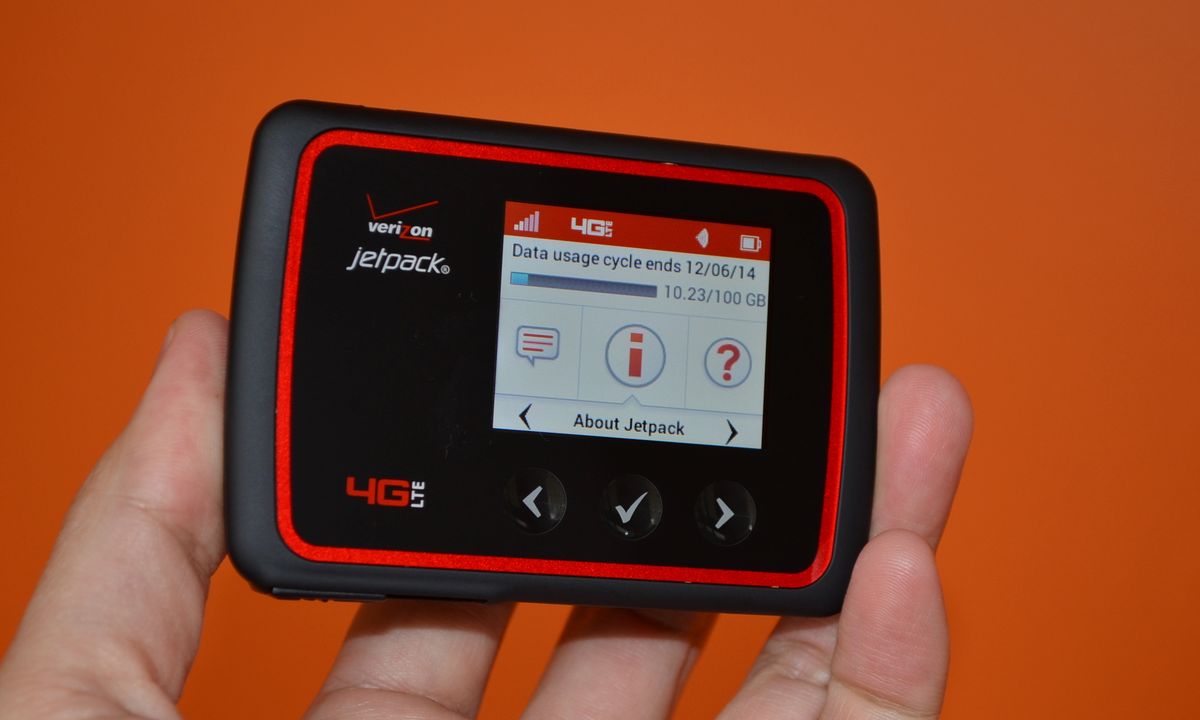Introduction
Hotspots have become an integral part of our modern connectivity landscape, providing convenient access to the internet in public spaces, such as cafes, airports, and hotels. While these Wi-Fi hotspots offer a gateway to the digital world, users often encounter restrictions that limit their online activities. These limitations can be frustrating, especially when attempting to access certain websites, use specific applications, or engage in bandwidth-intensive activities.
Understanding the intricacies of hotspot restrictions and learning effective techniques to bypass them is crucial for individuals seeking unrestricted access to the internet. Whether you're a digital nomad, a remote worker, or a casual internet user, knowing how to navigate hotspot restrictions empowers you to make the most of your online experience without unnecessary barriers.
In this comprehensive guide, we will delve into the world of hotspot restrictions, exploring the underlying reasons for these limitations and equipping you with practical strategies to overcome them. From understanding the technical aspects of hotspot restrictions to discovering ingenious workarounds, this guide will serve as your roadmap to reclaiming control over your internet access in hotspot environments.
Join us as we embark on a journey through the intricacies of hotspot restrictions, unveiling the tools and techniques that can liberate your online experience. Let's unlock the full potential of Wi-Fi hotspots and break free from the shackles of restrictive internet access.
Understanding Hotspot Restrictions
Hotspot restrictions are limitations imposed on internet access through Wi-Fi hotspots, often implemented by the network provider or the administrator of the hotspot. These restrictions can encompass a wide range of controls, influencing the type of content that can be accessed, the speed of the connection, and the overall usability of the hotspot. Understanding the nature of these restrictions is essential for devising effective strategies to bypass them.
Types of Hotspot Restrictions
-
Content Filtering: Hotspots may employ content filtering to block access to specific websites or types of content deemed inappropriate or undesirable. This can include social media platforms, streaming services, or certain categories of websites.
-
Bandwidth Limitations: To manage network resources, hotspots may impose restrictions on the amount of data that can be transferred within a specified time frame. This can result in reduced speeds or complete throttling of the connection after reaching a certain data threshold.
-
Protocol Restrictions: Some hotspots may restrict the use of certain network protocols, such as peer-to-peer (P2P) file sharing or virtual private network (VPN) connections, limiting users' ability to engage in these activities.
-
Time-Based Access: Hotspots may enforce time-based restrictions, allowing users to access the internet only during specific hours or for a limited duration before requiring reauthentication.
Reasons for Hotspot Restrictions
Hotspot restrictions are often implemented for various reasons, including:
-
Network Security: Limiting access to certain websites or protocols can help mitigate security risks and prevent unauthorized access to sensitive information.
-
Bandwidth Management: By imposing data limits and throttling speeds, hotspot providers can ensure fair usage of network resources and maintain a consistent level of service for all users.
-
Compliance and Regulations: Some hotspots are subject to regulatory requirements, necessitating the implementation of content filtering or other restrictions to adhere to local laws and regulations.
Understanding the underlying motivations behind hotspot restrictions provides insight into the challenges faced by users seeking unrestricted internet access in these environments. By grasping the intricacies of these limitations, individuals can explore effective techniques and workarounds to bypass hotspot restrictions and regain control over their online activities.
Techniques to Bypass Hotspot Restrictions
When faced with hotspot restrictions, it's essential to explore effective techniques to bypass these limitations and unlock unrestricted access to the internet. Whether you're aiming to access blocked websites, circumvent bandwidth limitations, or overcome protocol restrictions, several ingenious methods can empower you to navigate hotspot restrictions with ease.
1. Virtual Private Network (VPN)
Utilizing a VPN service is a powerful and versatile method to bypass hotspot restrictions. By encrypting your internet traffic and routing it through a remote server, a VPN enables you to evade content filtering, bypass bandwidth limitations, and circumvent protocol restrictions. Additionally, VPNs offer enhanced privacy and security, safeguarding your online activities from prying eyes.
2. Proxy Servers
Proxy servers act as intermediaries between your device and the internet, allowing you to access content indirectly. By rerouting your traffic through a proxy server, you can bypass hotspot restrictions and access blocked websites or services. However, it's important to choose a reliable and secure proxy server to ensure the protection of your data and privacy.
3. DNS Tunneling
DNS tunneling involves encapsulating internet traffic within DNS queries and responses, effectively bypassing network restrictions. This technique can be employed to access blocked content and services, as well as evade bandwidth limitations imposed by hotspots. However, it's crucial to use DNS tunneling responsibly and in compliance with applicable laws and regulations.
4. Mobile Hotspot Tethering
In scenarios where a Wi-Fi hotspot imposes stringent restrictions, utilizing mobile hotspot tethering can provide an alternative means of internet access. By leveraging your mobile device's data connection, you can bypass the limitations of the Wi-Fi hotspot and enjoy unrestricted internet access. However, it's important to consider potential data usage and associated costs when employing this method.
5. Tor Network
The Tor network, renowned for its emphasis on privacy and anonymity, can be utilized to bypass hotspot restrictions and access blocked content. By routing your internet traffic through a series of encrypted relays, Tor enables you to circumvent content filtering and protocol restrictions, offering a decentralized and resilient approach to bypassing hotspot limitations.
6. Obfuscation Techniques
Certain obfuscation techniques, such as utilizing obfuscated servers or protocols, can effectively disguise your internet traffic, making it challenging for hotspot restrictions to identify and block specific activities. By employing obfuscation, users can bypass content filtering and protocol restrictions, ensuring unhindered access to the desired online content and services.
By leveraging these techniques, individuals can overcome hotspot restrictions and reclaim control over their internet access, enabling seamless and unrestricted connectivity in hotspot environments. It's important to exercise caution and adhere to legal and ethical considerations when employing these methods, ensuring responsible and respectful use of the available techniques to bypass hotspot restrictions.
Workarounds for Hotspot Restrictions
In addition to the technical techniques for bypassing hotspot restrictions, there are several practical workarounds that individuals can employ to navigate and overcome limitations imposed by Wi-Fi hotspots. These workarounds encompass a diverse range of strategies, from adjusting online behaviors to leveraging alternative connectivity options, offering users creative and effective ways to bypass hotspot restrictions.
-
Offline Access and Preloading: To mitigate the impact of content filtering or time-based access restrictions, users can proactively preload desired content for offline access. This approach is particularly useful for accessing articles, documents, or media that may be subject to hotspot restrictions. By preloading content onto their devices while connected to an unrestricted network, individuals can ensure seamless access even when facing limitations in a hotspot environment.
-
Utilizing Alternative Hotspots: In cases where a specific hotspot imposes stringent restrictions, exploring alternative Wi-Fi hotspots or seeking out mobile data connectivity can provide a viable workaround. By leveraging different connectivity options, individuals can circumvent the limitations of a particular hotspot and access the internet with greater freedom and flexibility.
-
Browser Extensions and Add-Ons: Certain browser extensions and add-ons are designed to enhance online privacy and circumvent content restrictions. By incorporating these tools into their web browsers, users can bypass content filtering, block intrusive tracking mechanisms, and access region-restricted content, effectively overcoming hotspot limitations without the need for complex technical configurations.
-
Utilizing HTTPS Connections: Opting for secure HTTPS connections whenever possible can help individuals bypass certain types of content filtering and inspection performed by hotspot providers. By encrypting the communication between their devices and websites, users can enhance their privacy and bypass restrictions imposed on unsecured HTTP connections, ensuring seamless access to a wide range of online resources.
-
Offline Communication and Productivity Tools: When facing time-based access restrictions or limited connectivity in hotspot environments, leveraging offline communication and productivity tools can mitigate the impact of these limitations. Utilizing offline messaging apps, productivity suites, and collaborative tools enables individuals to remain productive and connected even in the absence of continuous internet access.
By embracing these workarounds, individuals can effectively navigate hotspot restrictions and maintain a seamless online experience, regardless of the limitations imposed by the Wi-Fi hotspot. These practical strategies complement the technical techniques for bypassing hotspot restrictions, offering users a diverse array of options to overcome limitations and reclaim control over their internet access in hotspot environments.
Conclusion
In conclusion, navigating hotspot restrictions requires a nuanced understanding of the underlying limitations and the deployment of effective techniques and workarounds to bypass these constraints. Wi-Fi hotspots, while providing convenient access to the internet, often impose content filtering, bandwidth limitations, protocol restrictions, and time-based access controls, presenting challenges for users seeking unrestricted connectivity.
By comprehending the diverse types of hotspot restrictions and the reasons behind their implementation, individuals can devise informed strategies to overcome these limitations. Whether motivated by network security, bandwidth management, or regulatory compliance, hotspot restrictions underscore the need for users to adapt and innovate in their approach to internet access.
The techniques to bypass hotspot restrictions, including the use of virtual private networks (VPNs), proxy servers, DNS tunneling, mobile hotspot tethering, the Tor network, and obfuscation techniques, empower users to circumvent content filtering, bandwidth limitations, and protocol restrictions. These technical methods offer versatile and resilient approaches to reclaiming control over internet access in hotspot environments, enabling individuals to engage with online content and services without unnecessary barriers.
Furthermore, practical workarounds, such as offline access and preloading, utilizing alternative hotspots, leveraging browser extensions and add-ons, opting for secure HTTPS connections, and embracing offline communication and productivity tools, complement the technical techniques for bypassing hotspot restrictions. These creative strategies provide individuals with diverse options to navigate and overcome hotspot limitations, ensuring uninterrupted connectivity and productivity in hotspot environments.
As the digital landscape continues to evolve, the ability to effectively bypass hotspot restrictions becomes increasingly vital for individuals across various contexts, including remote work, travel, and leisure. By staying informed about the latest developments in hotspot technology and network management, users can adapt their approaches to internet access and maintain a seamless online experience, regardless of the restrictions imposed by Wi-Fi hotspots.
In essence, the journey through the intricacies of hotspot restrictions unveils a landscape rich with opportunities for innovation and adaptation. By embracing a combination of technical expertise, creativity, and resourcefulness, individuals can transcend hotspot limitations and unlock the full potential of Wi-Fi hotspots, reclaiming control over their internet access and embracing the boundless opportunities of the digital world.

























